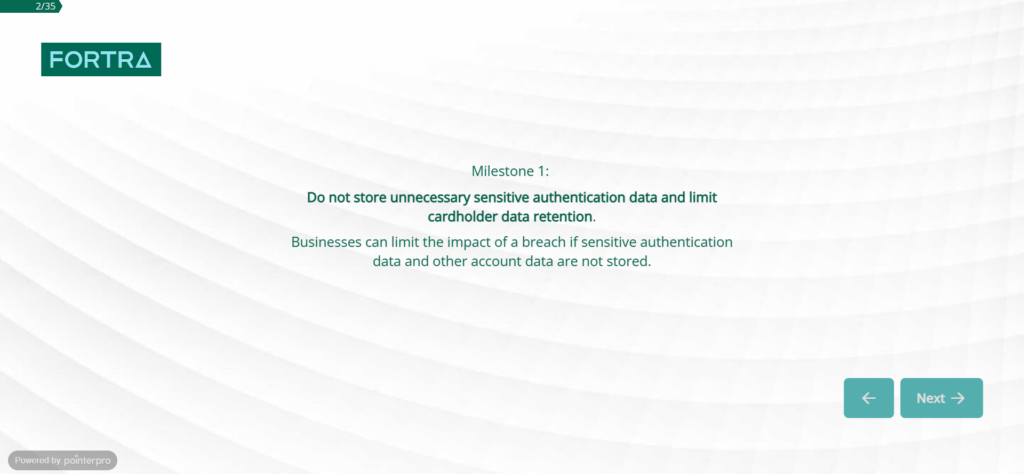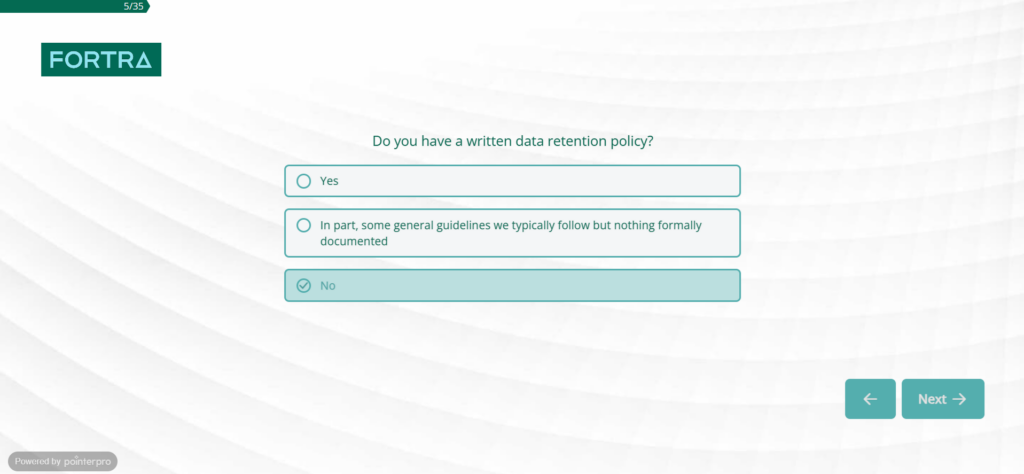In 2023, organizations that have recovered from the pandemic upset still tend to invest their money more selectively than they used to. When it comes to consulting, they prefer to seek out highly specialized expertise to get their money’s worth.
That might be one explanation for the success of agencies like Bora, a cybersecurity marketing agency (the type of dedicated specialization we love to endorse at Pointerpro). Another explanation is the simple fact that, though more crucial and prevalent than ever, cybersecurity services are complex. And thus specialized marketers are no luxury for a cybersecurity provider to have.
We talked to Bora CEO David Turner and Marketing Specialist Emma Colburn about their view on things, and how they’ve come to know Pointerpro as a beneficial consulting tool for their activities. Topics:
How cybersecurity marketing works
Can you introduce what Bora does exactly?
David: We’re a cybersecurity marketing agency. We work with cybersecurity service providers to help them with their content marketing. Typically, that means either expanding their social media footprint or driving traffic to their website.
The content we create is aimed at attracting visitors, engaging with them and ideally at some point collecting data that turn into sales leads. We create technical documents like e-books, whitepapers, blog posts, social media content. It’s a broad spectrum aimed at taking the end customer through a journey from the top of our client’s funnel to conversion into a sales lead.
What makes it so that cybersecurity providers need a specialized marketing approach?
David: Doing niche marketing means you need both a broad and deep understanding of the industry. Cybersecurity is a niche market of technology, but within the domain of cybersecurity, there are also many disciplines. There are numerous vendors that sell completely different services, but in a lot of instances, they partner together to deliver solutions. That’s why strong knowledge of the subject matter on the marketing side is a real must-have for them.
When I scroll through my LinkedIn feed, I notice a lot of anxiety and noise around cybersecurity. How does one cut through that noise?
David: Yes, it’s interesting. There was actually little cybersecurity news in the mainstream media about five years ago. Since then, there have been some notable breaches that have affected a broad spectrum of people. We’re all consumers, at the end of the day. We use petrol stations, water supplies, banks, and credit cards… Most people have been affected by at least one breach or another. So, people have started taking note of it.
Emma: Because our clients have such specialized products and services, we’re actually trying to reach a relatively small market, as opposed to engaging in mass communication. So, while there is a lot of noise about cybersecurity in broad terms, we actually focus on reaching small groups of people with very distinct messages. I think that’s part of how we try to make a difference: highly relevant messages and content.
Cybersecurity marketing trends and the quest for data
Do you recognize any new emerging trends in your domain?
David: I think the big thing being talked about is AI. There’s the question of what we do with it as marketing content creators and of what AI could mean in the hands of threat actors. From our perspective, we’re creating content based on the experience and knowledge of our people and writers. If AI can pull this same quality of content from the web, there’s a chance we can use this to increase our efficiency and hopefully deliver even better things for our clients.
Right now. It’s still in its infancy, I’d say. I’ve been through other similar developments in technology. When I think about the graphic design industry starting to use Apple Macs to deliver creative work, it was actually pretty basic in the beginning. If you see what graphic designers create today with for instance the Adobe Creative Suite, it’s simply impressive. I think we might see the same evolution with AI.
How do you navigate the quest for data in a domain like cybersecurity where messaging often revolves around data privacy and security?
David: Well, you can’t just walk up to someone and ask them to get married. It’s the same way with this. You can’t ask for someone’s contact details at the very first touchpoint. You have to build a relationship. You have to go through the funnel process, and if you succeed at providing someone with value there, then they might be prepared to give their contact details.
However, the expectations of what someone’s willing to share contact details for don’t always align with reality. A person who is not willing to give up contact details for an infographic might be willing to give it up to attend a webinar. It’s about serving up the right things that are gated versus giving content away so that people learn about your service.
Emma: That’s right. The people we talk to are tech-savvy and security-savvy. There are lots of ways people could leave behind fake information to retrieve the gated content. But again, we don’t try to get thousands of people to download our content. We’re looking for people that actually find it relevant and want to engage with it. At that point, they are willing to share their information because they do want to learn more. So it’s all about pacing and targeting the messaging.

"We don't try to get thousands of people to download our content. We’re looking for people that actually find it relevant and want to engage with it."
Emma Colburn (Digital Marketing Specialist at Bora)
Why use cybersecurity assessments as a marketing consulting tool (and how)?
Can you tell us a little bit about Bora’s process, of working with cybersecurity companies for their marketing, from intake to execution?
Emma: We tend to build relationships over time. It often starts with a small service, like writing blog content or newsletters. But as we go on, we talk with them and learn more about their niche, and they learn to trust us more. We get more and more involved. So, what then gets added to the established cadence of content is a campaign around a key topic.
At the moment, for instance, I’m working on one about data protection. We look at all the angles we can use to build our campaign around data protection. It’s really a partnership with the client. We go from understanding the problem better together to developing ideas, and we then take the detailed work off their shoulders.
Why did you start looking for an assessment and automated PDF reporting solution like Pointerpro?
Emma: I was looking for something that would help end customers understand the issue that they were facing. As an example, we did a campaign around payment security for our client. We wanted to get their customers or prospects to understand where they are now in terms of understanding or learning a new piece of legislation. There were two parts to it: helping them recognize the problems and helping them understand in what phase they find themselves, so that they could take effective action.
As David said earlier, we often work with ebooks or whitepapers, blogs, and social media content. But this added another layer of conversation. One that allowed us to offer something even more valuable to the target audience.
David: There’s also another project for which we’ve proposed Pointerpro, although it hasn’t moved forward yet. Here the tool would be useful for us and our client to understand where end customers are on their buying journey.
So, on top of having something of value to offer respondents on the spot – we could understand how to segment these potential leads and follow them up differently, If an assessment indicates a prospect is in an early phase of the buying journey, we could follow up with the most relevant material for someone in that phase. If the prospect is more advanced, we could follow up with more advanced material. So it’s really two-fold. Following up with the customer with something valuable, but also being able to segment.

“Something, I’d really like to mention is that the onboarding process of Pointerpro was excellent. I didn’t realize it was going to be so good when I signed on.”
Emma Colburn (Digital Marketing Specialist at Bora)
Did you look into tools other than Pointerpro?
Emma: I really knew what I wanted, and I couldn’t find anything else that did it. Interestingly, your website has some pages that compare Pointerpro to other tools. That gave me the chance to go explore. There are plenty of solutions to do surveys, but I couldn’t find any other good solution to provide tailored, automated reports. And that’s truly where the added value lies.
We do often hear that the only real alternative is a custom-designed solution, but it’s very expensive and difficult to maintain…
Emma: Yes, in fact, one of our clients has a custom, manual solution. They have a beautiful questionnaire. But every time someone completes the questionnaire, they have to write the report from scratch. It takes them a couple of days each time to put together something meaningful. We didn’t want to end up in that position. We wanted this approach to be broader and be able to do more than just one report every couple of days…
…an approach that shortens the time-to-business-value, I assume.
Emma: Exactly!
A cybersecurity marketing campaign for the payment card industry
You mentioned the job you did with Pointerpro for a client in the payment card industry. Can you elaborate a little on that campaign?
Emma: Sure. The payment card industry has a new payment card standard that will be implemented next year. It’s all about security when people pay with cards. It affects millions of businesses globally. As always with standards, they’re continually being improved. This project was about the move to a new stage, from 3.1 to 4.0.
Companies are generally in the implementation stage. That means they have about a year before the deadline hits. So, we wanted to help our client’s potential customers understand where they were in that transition, what they had left to do, and what the big changes were.
We produced a campaign kit around the topic. We talked to experts in the industry and asked them about how they managed the transition and summarized that in an ebook. We also put together a webinar and a series of more detailed blog articles. The Pointerpro part of this campaign was again about helping people understand where they were and what they had left to do.
We broke the transition cycle down into six milestones to completion. After completing an assessment, an organization would know what elements were left to do to complete each milestone. All of that clearly laid out in a PDF report.

Very interesting. And as an agency using Pointerpro, how was the process with your client?
Emma: We consulted with our client about what would be the right questions to ask, in order to determine the core of the problem. So, in this case we’re talking about a campaign for Fortra’s brand, called Tripwire.
They have amazing subject matter experts that we would talk to and get insights from to create the questions, the option answers and the advice linked to all of that. And again, we work in conjunction with these subject matter experts to make sure everything is in line with the advice they give. It is quite a lengthy process because this is not a quick 10-question survey about what someone had for dinner yesterday. It’s really in-depth consulting but with an automated tool.


What can you say about the results of the Pointerpro assessments you built for Tripwire? Are there any lessons that could be useful for future Pointepro users?
Emma: The assessments have generated new leads that our client can attribute purely to the interaction with the tool. From the campaign we started at the beginning of the year, we still get responses every week. But it is one of those things you can dial up and down. It’s not like you create an assessment and then the job is done. The other part of the job is reaching the people for whom it’s useful. And that’s an ongoing effort.
David: Pointerpro is one of those tools that are tremendously useful in specific circumstances. As an agency, we would definitely like to introduce it more to clients. At the same time we are mindful that in order for us to develop something that is really meaningful, a little bit of a time investment is required from our clients too.
That’s true. To make the best use of a digital consulting tool like this, there is some homework to be done upfront. Before we end. Is there anything else you’d like to share?
Emma: Something, I’d really like to mention is that the onboarding process of Pointerpro was excellent. I didn’t realize it was going to be so good when I signed on. The amount of time put in and the clarity of information I was given to help me was great.
I had a series of video calls with Anna, which took me step by step through each stage of the process, it was so helpful. I also had a copy of the recording which enables me to refresh my memory. There was still a big learning curve, if I look back at the first assessment we built. But again, I loved the onboarding process and the fact that your team was so reactive and helpful whenever I had any questions. It was really enjoyable.
That’s wonderful to hear. Thanks for sharing that. And thank you both so much for this interview.
Emma & David: It was great to participate. Thank you.


